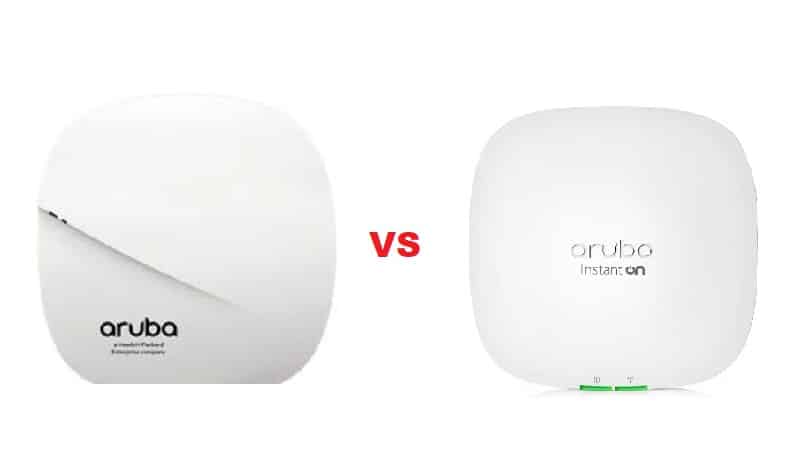
Aruba Instant APs and Aruba APs have recently been the talk of the town. These terms appear to be synonymous, but what distinguishes them as they refer to distinct access points? When working with Aruba access points, this question may have crossed your mind. The controller capabilities of instant access points and basic access points differentiate them.
Because the Aruba IAP vs AP comparison is frequently made, it is critical to understand the primary functional differences between the two. As a result, if you’re looking for a clear distinction between the two, this article will help you understand what distinguishes them.
Aruba Instant Access Point (IAP) vs Access Point (AP) Comparison
Aruba Access Points (AP)
Aruba access points and controller bases which is why they are different from the instant on as they are controller-less access points. This significant difference pretty much sums up the entire discussion, but we’re not going to stop here. To comprehend both access points, you must first comprehend their functionality and interdependence. Because Aruba access points are controller-dependent, you must connect the AP to the Aruba controller for them to function. You won’t be able to configure your AP otherwise.
Campus access points (CAP) from Aruba cannot be converted to Instant APs, nor can they be clustered with IAP because they have different configuration styles. Having said that, some Aruba AP models can operate in both controller-based and controller-less modes. However, because the models of these APs are limited, this remains a significant difference between them. When you purchase your APs, connect them to the controller, and the DHCP server will assist the router in assigning them an IP address. After that, you can connect your AP to the controller and get it to work.
When it comes to configuring Instant APs, however, they are far less painful. As previously stated, you cannot convert an AP to an Instant AP, and as a result of this limitation, users may prefer instant on because they are flexible APs as long as they are running their network in a small home.
Aruba Instant APs (IAP):
Since the main distinction was made in the Aruba AP section, IAPs are controller-less access points. This means that you won’t need a controller to set up your instant access points. However, if there is no controller setting, you may be wondering how users manage their IAPs. This is a valid question because IAPS can be monitored and managed with the help of a virtual controller. Aside from that, you can expect your IAP to perform more advanced functionality than the APs. Instant access points are intended for deployments on a medium to large scale. This is because they can easily provide you with more functionality in dense network environments.
Now let’s talk about the adaptability of these access points. IAPs can be easily configured with the virtual controller, but they must first join an IAP cluster. IAPs, on the other hand, can be easily converted to campus APs. It means that if your access point is running controller-less, you can configure it to run in controller-based mode. However, the purpose of this point is to confirm the access point’s range. In either case, the instant access points are not converted to simple APs because their controller-less architecture is quite useful, or you do not want to compromise on the advanced features the access point provides. Instant APs are simple to use because they are set up automatically. They are simple to manage and provide superior performance when compared to campus access points.
The Final Verdict: Which Is Better – Aruba AP or Aruba IAP?
Because Aruba instant has higher performance and capacity, they are typically the first choice of users. However, this does not imply that APs are not worthwhile investments; rather, they can be worked out with small-scale deployments. If you want to install your APs in a large or medium-sized area, IAPs are the best option. This is because they can handle multiple clients and a clustered network more efficiently than APs. As a result, you can select either of them based on your network requirements.